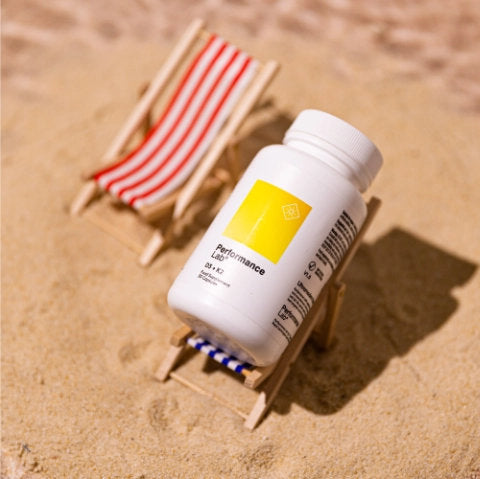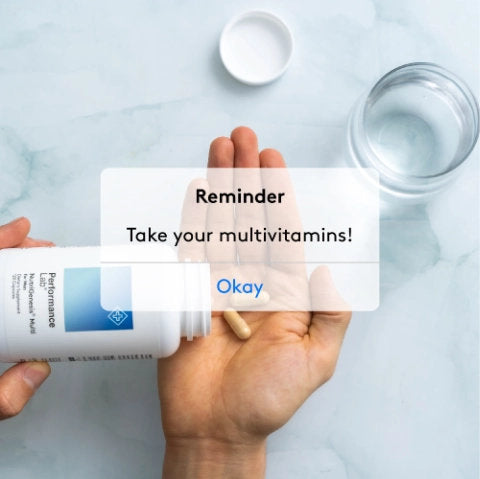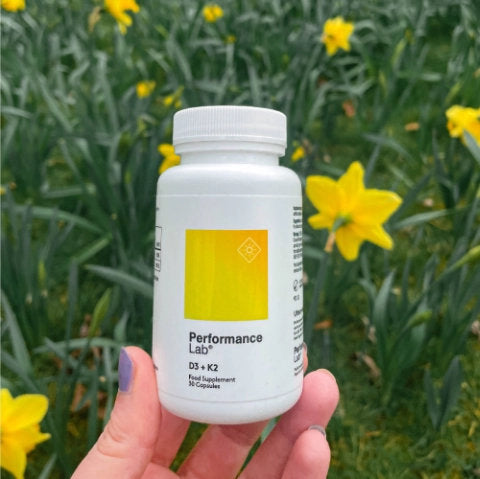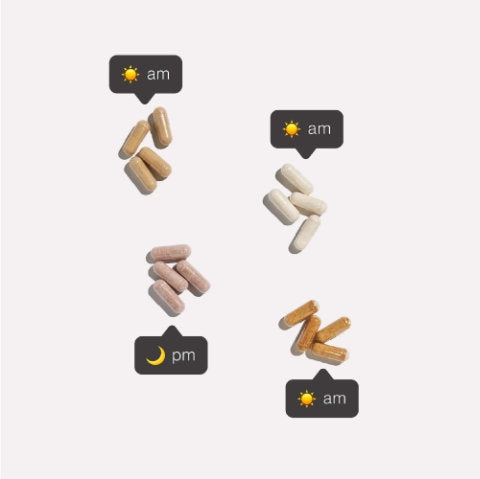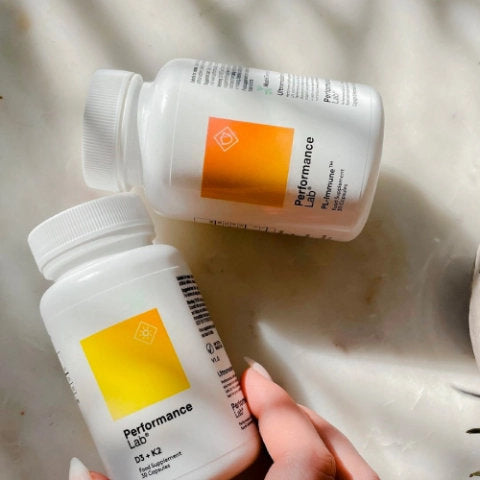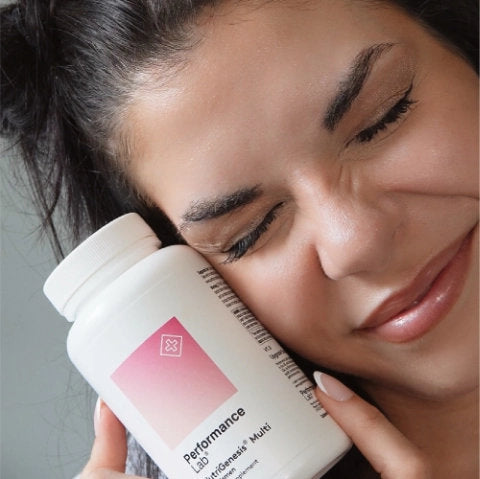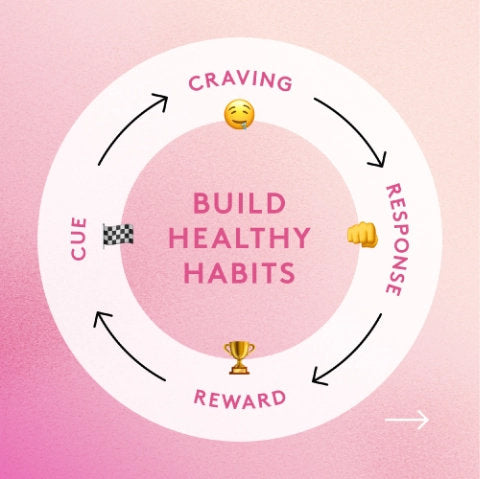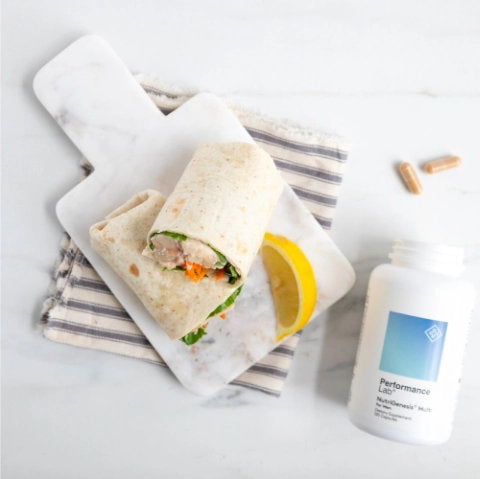There’s a good reason vitamin D is called the sunshine vitamin—it’s the only vitamin that can be synthesized in the skin from the UVB rays emitted from the sun.
And while you’d think that most people get adequate sun exposure, it’s suggested vitamin D deficiency actually affects over 40% of American adults. 1 A staggering number considering maintaining levels seems quite simple.
If that wasn’t enough, some research suggests that vitamin D deficiency could play a role in the development of many chronic diseases, which means getting enough daily is super important. This is why the best multivitamin for women is stuffed full of Vitamin D; to make up for gaping deficiencies.
If you want to learn more about the easiest way to boost your levels, this article will look at how you get vitamin D from the sun, what affects vitamin D levels, and how you can get the most from the sun!
What Is Vitamin D?
Before we get too deep into vitamin D and the sun, we want you to know that vitamin D is more than just a vitamin. It’s actually a fat-soluble prohormone steroid with endocrine, paracrine, and autocrine functions 2.
The endocrine functions are mainly involved in regulating serum calcium levels. Vitamin D and calcium work closely together to control calcium levels in the bloodstream by constantly allowing calcium and phosphate absorption from the gut or taking calcium from bones.
The paracrine and autocrine functions of vitamin D differ based on the type of cell expressing vitamin D receptors. Some roles include inhibiting cell proliferation, promoting cell differentiation, and apoptosis, which may play some sort of role in a host of different organ systems.
And while you can get your fair share of vitamin D to support these functions in pills, liquids, and fortified foods, it’s also made in the human body!
How Do You Get Vitamin D From The Sun?
There are only three ways you can get vitamin D: foods, supplements, and the sun. The most well known of these is, of course, the sun.
When the skin is exposed to sunlight, it produces vitamin D from cholesterol—a steroid hormone naturally present in your body. The sun’s ultraviolet B (UVB) rays hit cholesterol in the skin cells, which provides the energy needed for vitamin D synthesis to occur.
But vitamin D that comes from either the skin or diet is biologically inert and must first be converted in the liver and then the kidneys to the biologically active form that stimulates calcium absorption in the gut 2.
Without sufficient vitamin D, only 10-15% of dietary calcium is absorbed, and only 60% of phosphorus is absorbed. However, with sufficient vitamin D, calcium and phosphorus absorption is enhanced by up to 40% and 80%, respectively 3!
Serum concentrations of vitamin D3 peak about 24–48 h after exposure to UVB light 2. And as a lipid-soluble molecule, vitamin D3 is taken up by adipocytes (fat cells) and stored in subcutaneous fat for later use 2. This distribution in adipose tissue prolongs the time that vitamin D stays in the body.
Factors That Affect Vitamin D Levels
Intake of vitamin D from food sources is generally not substantial enough to maintain adequate serum levels, so supplementation is usually required. But other factors can impair adequate vitamin D synthesis in the skin 3:
- Lack of physical activity
- Reduced sun exposure due to environmental factors like air pollution or geographic location
- Darker skin color—large amounts of melanin reduce the skin’s ability to produce vitamin D from sunlight
- Aging—the skin cannot synthesize vitamin D as effectively
- People with fat malabsorption—requires the presence of fat for absorption in the gut
For people who follow plant-based diets, getting vitamin D from the diet is even more challenging because it’s found mainly in animal foods, so focusing on sun exposure and supplementation is essential.
How To Get The Most From The Sun
If you’re trying to boost your skin synthesis of vitamin D, here are a couple of tips to help you:
Expose your skin during peak times. Especially in the summer months, the sun is strongest around mid-day (10 am and 2 pm), meaning it emits the strongest UVB rays and therefore is most effective to produce vitamin D.
A study in the UK found that just 13 minutes of sunlight to 35% of the skin at midday during the summer months (3x/week) is enough to maintain healthy levels of vitamin D in Caucasian adults 4.
Another study found that 30 minutes of midday summer sun exposure was equivalent to consuming 10,000–20,000 IU of vitamin D 5.
Spend more time in the sun if you’re far from the equator. Because the earth’s ozone layer absorbs a lot of the UVB rays from the sun, people who live farther away from the equator should spend more time in the sun to produce enough vitamin D 6.
And for people who live in colder climates, vitamin D synthesis in the skin may not happen for up to six months of the year, making supplementation all the more critical.
Conclusion: How much Vitamin D do you really get from the sun?
There’s no question that vitamin D is critical to your health and physical performance, but for anyone living in climates where sun exposure can be few and far between, having vitamin D in your multivitamin or supplementing with a pure D3 supplement is non-negotiable.
However, the amount of vitamin D you get from the sun largely depends on the factors above. If you’re older or have darker skin, you may need a bit more exposure than someone who is fairer-skinned.
Regardless, get out and enjoy the sun! Just 20-30 minutes a day in the summer months should be enough to maintain adequate serum concentrations.
References
- KY Forrest, WL Stuhldreher. Prevalence and correlates of vitamin D deficiency in US adults.Nutr Res. 2011;31(1):48-54.
- WZ Mostafa, RA Hegazy. Vitamin D and the skin: Focus on a complex relationship: A review.J Adv Res. 2015;6(6):793-804.
- R Nair, A Maseeh. Vitamin D: The “sunshine” vitamin.J Pharmacol Pharmacother. 2012;3(2):118-126.
- LE Rhodes, AR Webb, HI Fraser, et al. Recommended summer sunlight exposure levels can produce sufficient (> or =20 ng ml(-1)) but not the proposed optimal (> or =32 ng ml(-1)) 25(OH)D levels at UK latitudes.J Invest Dermatol. 2010;130(5):1411-1418.
- E Cicarma, AC Porojnicu, Z Lagunova, A Dahlback, A Juzeniene, J Moan. Sun and sun beds: inducers of vitamin D and skin cancer.Anticancer Res. 2009;29(9):3495-3500.
- M Wacker, MF Holick. Sunlight and Vitamin D: A global perspective for health.Dermatoendocrinol. 2013;5(1):51-108.

